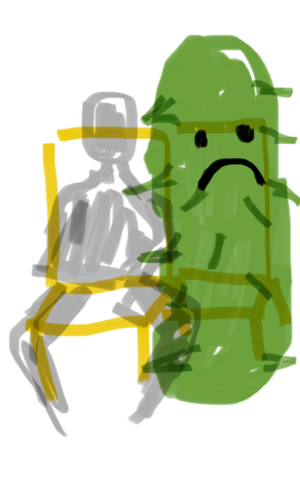User:ZUZU/Projects That May or May Not Be Made
Project3:Cactus passenger
What is it?
- Two neighbouring chairs on a transport vehicle, when a passenger sits down, the neighbouring chair generates a cactus shaped balloon as a temporary passenger and the balloon starts to inflate.
- Cactus size: Its size depends on the degree of thigh spreading detected when passenger sitting . If the thighs are spread wider, the balloon expands accordingly until it encroaches on the seating space.
- Cactus Scream: collects people's internal activity when public space is invaded and adjusts the content and volume according to the extra space occupied by the passenger.
- Cactus Emoji: an electronic screen that adjusts the emoji according to the extra space occupied by the passenger.
Why make it?
From time to time I have observed a temporary encroachment of public space that I have been experiencing myself: in public transport, waiting areas or other shared seating spaces, it often happens that body space is encroached upon by others. Through this interaction I hope to observe how people react to this encroaching experience, including whether they change the way they sit or how they interact with the balloons around them making people aware of how their physical behaviour affects the use and perception of the space around them.
Workflow
Determine the design of the cactus-shaped balloon, the seating sensors, the balloon expansion mechanism, the sound feedback system (cactus scream), and the electronic screen displaying the emoticons (cactus emoji)
Production
Testing
Timetable
Rapid prototypes
Previous practice
Relation to a wider context
Project1:
What is it?
Why make it?
In China, many feminists choose voluntary celibacy and non-marriage as a form of nonviolent revolution against patriarchal norms. However, in the Chinese language context, the pronunciation of "rights" is the same as "fist." Consequently, many males derogatorily refer to feminism as "female fists" (女拳), attempting to dominate discourse through this derogatory term. In response to this stigmatization, I believe the fist is an excellent symbol. It symbolizes strength, anger, and courageous resistance, serving as a powerful and intuitive symbol. When women express anger, this symbolic punching machine can represent them delivering a strong punch.

